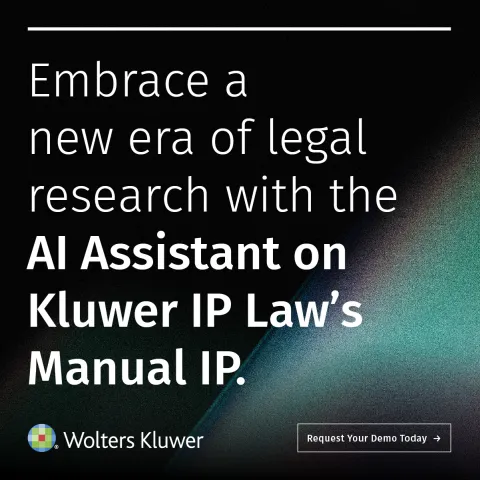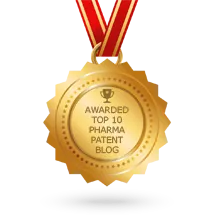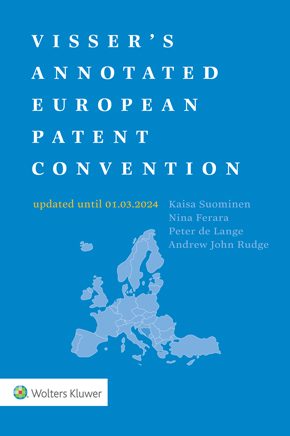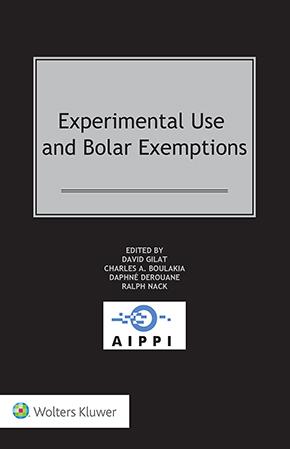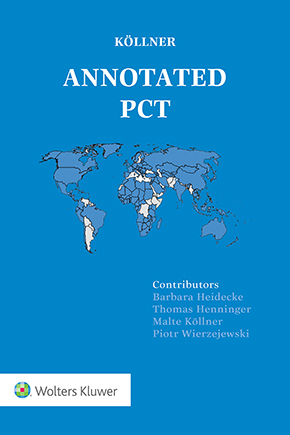Brazil: Implications of the Draft AI Guidelines for Biopharma and Agrochemical Inventions
October 19, 2025
AI is driving innovation in every single industry. Particularly health care is facing unprecedented automation in its ecosystem from care management to real time inputs from medical literature. The industry is implementing AI models using Retrieval-Augmented Generation (RAG) to shape the future.
Another example, is the use of AI tools to accelerate drug development, optimize clinical trial design, and analyze massive datasets for biomarker identification. Machine learning (ML) models can predict molecular interactions, assist in protein folding research, and even tailor therapeutic strategies to patient subgroups, reducing both development costs and timelines. This growing integration of AI not only enhances efficiency in research and development (R&D) but also drives the pursuit of personalized medicine and complex biologics.
In the agrochemical sector, AI is being increasingly used across the entire value chain to shorten development cycles, reduce costs and chemical use, improve regulatory compliance, and promote sustainable crop protection. In R&D, machine learning and generative models accelerate target identification, mode-of-action discovery, and de-novo molecule design while optimizing synthesis planning. Safety and regulatory work benefit from AI-based toxicology and ecotoxicity predictions, as well as drafting support for dossiers. In product development, AI optimizes formulations for efficacy, stability, and sustainability. Precision agriculture applications include computer-vision sprayers for targeted herbicide use, decision support for application timing, and resistance management modeling. Beyond the field, AI also improves demand forecasting, supply chain planning, and market intelligence.
The use of AI in the development of inventions raise, however, profound questions in patent law. Across the globe, patent offices are grappling with issues of inventorship, patentability, enablement, and non-obviousness. Questions arise about how much human contribution is required to allow patent protection for an AI-assisted invention; what must be disclosed about datasets; and how to assess obviousness in a world where powerful tools are arguably available to the skilled person. Data ownership, trade-secret interfaces, and plausibility standards further complicate protection strategies.
Against this backdrop, the Brazilian Patent and Trademark Office (Instituto Nacional da Propriedade Industrial – INPI) released in August 2025 a draft guidance for examining AI-related patent applications (“Draft AI Guidelines”), which is open for public consultation until October 19. This article offers a practical reading of those draft guidelines from the perspective of biopharma and agrochemical inventions.
Inventorship: AI-generated is a no; AI-assisted requires significant human contribution
The Draft AI Guidelines state unequivocally that outputs generated autonomously by AI, where a human being did little more than trigger a system, are not eligible for patent protection. Inventorship, under Brazilian law, must always be attributed to a natural person. By contrast, inventions assisted by AI can be patentable, but only where a human made an “intellectual contribution.”
The draft fit squarely within the emerging international consensus. It mirrors the EPO’s DABUS decisions, which refused applications naming an AI as inventor, and the UK Supreme Court’s ruling that an inventor must be a person. In the United States, the USPTO’s 2024 inventorship guidance likewise permits protection for AI-assisted work only when at least one natural person made a “significant contribution” to each claim. Mere operation or review of AI output is insufficient.
The INPI’s proposal further explains that human intervention may happen in the identification of a technical problem in the state of the art, in the configuration of the system to reach a specific goal, in the validation of proposed results, or even in translating those results into a concrete solution with industrial application. If the AI model proposes alternatives, the inventive conception and the definition of what is claimed must result from human intellectual work.
This means if an AI autonomously suggests a promising compound, that suggestion alone cannot be the basis for a patent in Brazil. Patentability requires identifiable human contribution, such as defining therapeutic objectives, setting boundary conditions, selecting among multiple AI-generated candidates, and/or validating predictions through laboratory or clinical studies. These steps of intellectual judgment and decision-making are what transform an AI output into a human invention. Without them, the output risks being treated as AI-generated rather than AI-assisted, and thus excluded from protection.
The same principle extends to agrochemical R&D: in crop-protection or formulation workflows, it is the scientist who must frame the screening regime, impose agronomic and regulatory constraints, interpret the system’s recommendations in light of field realities, and converge on a particular composition or application method. These are the moments of “intellectual contribution” by a human being that the INPI’s draft guidelines require.
Under the Draft AI Guidelines, patent applicants are further required to provide enough description to show how the AI-assisted solution materializes in the real world. They also must demonstrate that the technical effects are truly achieved by said solution, and not merely hypothesized by the model. This is a nod to the risk of “algorithmic hallucination.”
This requirement may, however, be dismissed when there is reliability in the result—for instance, when the efficacy was already known by a skilled person at the filing date.
Enablement: applicants must provide sufficient information
The Draft AI Guidelines acknowledge AI’s “black box” character yet emphasize that applicants must describe the invention in a clear and sufficient manner to enable a skilled person to reproduce it without incurring in undue experimentation.
That is, enablement does not require reproducing the exact performance metric, but the specification must provide enough technical details that allow a skilled person to reproduce the technical effect—such as the training/benchmark data (i.e., detail provenance, structure, and how relevant variables are obtained); the input–output correlation (i.e., explain why inputs plausibly yield the claimed outputs); and, depending on the case, essential model choices, parameters, training and validation procedures, and interactions with other technical components.
In drug discovery filings, applicants must be careful when the invention is described in terms of in silico predictions (binding scores, virtual screening rankings, or generative outputs). Without experimental data or a credible rationale showing why the claimed compounds or sequences plausibly achieve the therapeutic effect, the application risks being seen as speculative.
Similarly, broad antibody/peptide/chemotype claims generated by AI can fail on enablement if only a few exemplars are shown and there is no structural–functional relationship teaching the skilled person how to work across the full breadth.
In the agrochemical field, an AI model might suggest formulations or spray regimes optimized against simulation or greenhouse surrogates. But if the application claims field-level efficacy or resistance management, and provides no credible route to practice those conditions, enablement is vulnerable.
Another issue relates to parameter-defined inventions (e.g., “formulation with stability index ≥ X” or “sprayer system reducing drift by Y%”). If the application does not disclose a standardized method to measure those parameters, the scope is unclear and not reproducible.
Claims directed to “training data,” “datasets,” or “databases” are treated as presentations of information and excluded from patent protection. Claims must be framed around the technical application rather than around the dataset or model itself—for instance, “method of identifying kinase inhibitors using […]” or “process for formulating microencapsulated pesticide with […].”
Non-obviousness: unexpected technical effect linked to human contribution
It is emphasized in the Draft AI Guidelines that the assessment of inventive step will rest on the technical effects achieved by the invention itself, not on the mere fact that AI was used in the process.
Consequently, applicants cannot rely on the novelty of using AI as such. They must demonstrate that the human-guided use of AI produced a technical result that was not obvious to a skilled person. For example, a drug molecule that shows unexpected therapeutic selectivity or an agrochemical formulation with superior stability and environmental performance would qualify, but only if these properties, as stated above, were identified, validated, and framed by human inventors.
On the other hand, simply claiming a compound because an algorithm ranked it highly will rarely suffice, especially if the structure lies within chemical space that a skilled medicinal chemist would routinely explore.
Likewise, formulation optimization using AI may be seen as routine if it only combines known adjuvants or solvents. However, inventive step may be recognized where the resulting composition solves a technical bottleneck in a way that the skilled person would not have expected.
This approach is consistent with practice under the problem-solution framework: the decisive question is not whether AI was used to arrive at the invention, but whether the claimed subject matter produces a technical effect that is non-obvious over the closest prior art—and which, for AI-assisted inventions, is linked to the intellectual contribution of the natural person.
For applicants, this reinforces the importance of documenting the unexpected advantages validated by human inventors and framing claims around those effects, thereby anchoring inventive step in human intellectual contribution rather than in the computational process itself.
Strategies for applicants
While the Draft AI Guidelines may still undergo changes until they are approved, they already point to strategies that should be adopted by applicants working with AI tools in the biopharma and agrochemical fields:
· Document human contribution. Intellectual contribution of a natural person will be key when it comes to AI-assisted inventions, not only for the assessment of patentability, but also for enablement and non-obviousness analyses. Therefore, companies and researchers should maintain detailed records of the intellectual decisions made by researchers when using AI in R&D.
· Draft claims with attention to technical effects linked to human contribution. Claims should emphasize the specific technical solution—be it a compound with unexpected selectivity, a pesticide formulation with superior stability, or a process that achieves a measurable agronomic benefit—rather than the mere fact that AI tools were applied. Also, the technical effect obtained by the claimed matter should be the result of the intellectual contribution of a natural person.
· Ensure enablement at filing. Include enough disclosure to enable the reproduction of the invention by a skilled person at the filing date. As a general principle, post-filed data can corroborate, but cannot substitute for, a speculative disclosure.
· Frame applications around applied processes. Since claims directed solely to datasets or training procedures will be excluded, draft claims around the applied technical processes (e.g., screening methods, formulation processes, or bioprocess controls) where human inventors have made discernible contributions.
· Anticipate the “skilled person with AI” standard. As AI tools become more accessible, examiners may treat them as part of the skilled person’s toolbox. Applicants should therefore be prepared to explain why the claimed effect would not have been obvious even if such tools were available, and provide evidence of unexpected results.
You may also like







